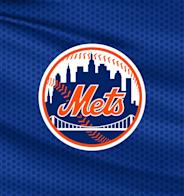Search results
Events
- MAY29SportsNew York Liberty Vs. Phoenix MercuryBarclays Center7:00 PMMAY29Arts & TheatreTurandot W/ Metropolitan OperaMetropolitan Opera House7:00 PM
- MAY29MusicHead AutomaticaBowery Ballroom7:00 PMMAY29
 MusicBrutus VIII - 21+Baby's All Right7:00 PM
MusicBrutus VIII - 21+Baby's All Right7:00 PM - MAY29
 Arts & TheatreThe Moth StorySLAMThe Bell House7:15 PMMAY29
Arts & TheatreThe Moth StorySLAMThe Bell House7:15 PMMAY29 SportsNew York Red Bulls Vs. Charlotte FCRed Bull Arena7:30 PM
SportsNew York Red Bulls Vs. Charlotte FCRed Bull Arena7:30 PM
Newark ( / ˈnjuːərk / NEW-ərk, [24] locally: [nʊɹk]) [25] is the most populous city in the U.S. state of New Jersey, the seat of Essex County, and a principal city of the New York metropolitan area. [26] [27] [28] As of the 2020 census, the city's population was 311,549.
- Overview
- History
- The contemporary city
Newark, city and port, Essex county, northeastern New Jersey, U.S. It lies on the west bank of the Passaic River and on Newark Bay, 8 miles (13 km) west of lower Manhattan Island, New York City. Newark was incorporated as a city in 1836. Pop. (2010) 277,140; Newark-Union Metro Division, 2,147,727; (2020) 311,549; Newark Metro Division, 2,280,061.
Puritans migrating from Connecticut founded Newark in 1666 on land purchased from Delaware Indians. The settlement, first named Pesayak Towne and later New Milford, was probably renamed for the home of the Reverend Abraham Pierson, who went there from Newark-on-Trent, England. Another version holds that the name was of biblical significance (New Ark). Newark became the seat of Essex county (1682) and was chartered as a township in 1693.
After the American Revolution, Newark became (c. 1790) noted for leather tanning, jewelry, and shoe manufacturing. The shoe industry profited greatly from the inventiveness of Seth Boyden, who, regarded by Thomas Edison as one of the greatest American inventors, came to Newark from Massachusetts in 1815 and developed a process for making patent leather (1818). He is credited as the first producer of malleable cast iron (1826) and as a developer of an improved, larger strawberry. There is a statue of him in Washington Park. Newark’s other industrial pioneers included the Reverend Hannibal Goodwin, who patented a flexible film for motion pictures (1887), and Edward Weston, who invented electrical measuring instruments (1888).
Newark’s proximity to New York City places it within the country’s most highly industrialized and populous area. The city is the largest in New Jersey and is a leading industrial centre. Its manufactures are highly diversified and include electronic equipment, leather goods, chemicals, rubber, jewelry, furniture and fixtures, textiles, industrial machinery, and foodstuffs. Printing, publishing, and the insurance business are also significant. Newark is a transportation centre and a major East Coast distributing point. Newark International Airport is one of the world’s busiest, since it serves both Newark and the New York City area. The Port of Newark, started in 1915, is now leased and operated by the Port Authority of New York and New Jersey.
Located in Newark are the New Jersey Institute of Technology (1881), the Newark campus of Rutgers University, a branch of Seton Hall University (1856; Roman Catholic), Essex County College (1968), and the University of Medicine and Dentistry of New Jersey (1956). Near the city centre is Military Park, used as a drill ground in colonial times and now the site of a bronze group of figures, The Wars of America, by Gutzon Borglum. Branch Brook, a county park, is noted for its Japanese cherry trees. In front of the county courthouse, designed by Cass Gilbert, is a seated statue of Abraham Lincoln, also by Borglum. Historic buildings include Trinity Cathedral (1733), used as a hospital during the Revolution; House of Prayer (1850), with its older stone rectory, Plume House (1710); and the First Presbyterian Church (1790). Adjacent to and part of the Newark Museum of Art (which has a variety of exhibits) is the Ballantine House (1880s), a restored Victorian mansion. The New Jersey Performing Arts Center (NJPAC; 1997), across from Military Park, is a multipurpose venue with fine acoustics and a mix of small and large performance spaces; it is home to the New Jersey Symphony Orchestra. Several blocks away, near City Hall (1908) and the Depression-era Newark Penn Station (which serves Amtrak, subway, and commuter trains), is the Prudential Center (2007), venue for the New Jersey Devils ice-hockey team and host to other sports and entertainment events.
Special offer for students! Check out our special academic rate and excel this spring semester!
Learn More
- The Editors of Encyclopaedia Britannica
Newark is New Jersey's largest city and second largest in Metro New York. Although one of the great historic cities of the Northeast and the most culture-rich city in the state, Newark is often overlooked in favor of Goliath-like Manhattan and towns along the Hudson River, such as Jersey City and Hoboken .
People also ask
Is Newark a city?
Where is Newark NJ located?
When was Newark founded?
Is Newark the most populous city in New Jersey?
Aug 29, 2022 · Newark is a big city situated in Essex County in the northeastern portion of the US State of New Jersey. The city serves as one of the country's most significant air, rail, and shipping hub and is New Jersey's most populous city. Newark is filled with history and heritage, and the city's Branch Brook Park is well known for its huge collection ...
Newark has long been the largest city in New Jersey. Founded in 1666, it greatly expanded during the Industrial Revolution , becoming the commercial and cultural hub of the region . Its population grew with various waves of migration in the mid 19th century, peaking in 1950.
Newark, City (pop., 2020: 311,549) and port of entry, northeastern New Jersey, U.S., west of New York City. It was founded in 1666 by Puritans and was chartered as a township in 1693. It was the site of the College of New Jersey (1748–56; now Princeton University).










































